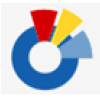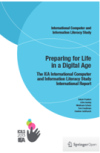|
|
|
|
Australian Council for Educational Research
 Image: ACER Image: ACER |
ACER creates and promotes research-based knowledge, products and services that can be used to improve learning across the life span.
Continue reading »
|
|
|
Building innovation: learning with technologies
 Image: ACEReSearch Image: ACEReSearch |
Kathryn Moyle (2010) explores national and international policy priorities for building students' innovation capabilities through information and communication technologies (ICT) in Australian schools.
Continue reading »
|
|
|
Forward thinking: three forward, two back: what are the next steps?
 Image: Flickr by CTJ Online Image: Flickr by CTJ Online |
Gerry White (2013) considers what we have learnt about using technology for teaching, learning and educational leadership in the past 30 years, examining the evidence and setting five challenges for the next stage.
Continue reading »
|
|
|
National School Improvement Tool (2012)
 Image: Report cover Image: Report cover |
Adopted in 2012, based on the Teaching and Learning School Improvement Framework, developed initially with the Queensland Department of Education and Training, and used as the basis for a teaching and learning ‘audit’ of every government school in that state in 2010. The Framework consists of nine interrelated domains.
Continue reading »
|
|
|
Digital Education Revolution – National Partnership, 2009-2013
 Image: Digital Education Revolution logo Image: Digital Education Revolution logo |
The Digital Education Revolution (DER) National Partnership was established to deliver system wide reforms in education to ensure that students are equipped for learning in a digital environment.
Continue reading »
|
|
|
Beyond the Classroom: A New Digital Education for Young Australians in the 21st Century
 Image: Report cover Image: Report cover |
The Digital Education Advisory Group (DEAG) was asked to assess the achievements in digital education to date, identify what remains to be achieved, establish new priorities and develop a strategy for future developments. The Advisory Group identified key areas that need to be addressed via a multi-pronged strategy.
Continue reading »
|
|
|
Students First 2014
 Image: StudentFirst logo Image: StudentFirst logo |
Under the students-first approach, the Australian Government will work with the states and territories, teachers and parents to focus on four key areas that will make a difference: teacher quality, school autonomy, engaging parents in education, strengthening the curriculum.
Continue reading »
|
|
|
Technology in schools
 Image: Dept. of Education and Training Image: Dept. of Education and Training |
The Australian Government supports the appropriate use of technology in Australian schools to prepare students to learn, train and live in a digital world, through online assessments, broadband-enabled education and skills services program and National Schools Interoperability Program.
Continue reading »
|
|
|
Australian Professional Standards for Teachers
|
|
Scootle Community
 Image: Scootle Community Image: Scootle Community |
A secure and social online professional learning network for all Australian educators, on the Declara platform. Aims to build a national network of educators through discussion, blogs and sharing of expertise.
Continue reading »
|
|
|
ICT in teacher education in the age of AITSL (2014)
 Image: Conference logo Image: Conference logo |
This 2014 paper is drawn from a 2012-2013 Office for Learning and Teaching (OLT) National Teaching Fellowship investigating the agencies impacting on whole-of course curriculum design in initial teacher education. This paper begins with a discussion of the requirements on both beginning teachers and initial teacher education programs in regard to ICT. It then presents case studies from four universities whose degree programs have been approved for implementation in 2014.
Continue reading »
|
|
|
Australian Curriculum Learning Areas: Technologies
 Image: acara Image: acara |
The Australian Curriculum: Technologies draws together the distinct but related subjects of Design and Technologies and Digital Technologies. It will ensure that all students benefit from learning about and working with traditional, contemporary and emerging technologies that shape the world in which we live. In creating solutions, as well as responding to the designed world, students will contribute to sustainable patterns of living for themselves and others.
Continue reading »
|
|
|
Preparing for life in a digital age: the IEA international computer and information literacy
 Image: Report cover Image: Report cover |
The International Computer and Information Literacy Study (ICILS) studied the extent to which young people have developed computer and information literacy (CIL) to support their capacity to participate in the digital age. The study further addresses the necessity for policymakers and education systems to have a better understanding of the contexts and outcomes of CIL-related education programs in their countries.
Continue reading »
|
|
|
How well do young people deal with contradictory and unreliable information on line?
 Image: ACER image Image: ACER image |
This 2012 paper examines the question of how well young people are in fact able to recognise whether information is likely to be trustworthy. It draws on data from the first large-scale international assessment of online reading, the Digital Reading Assessment (DRA) that was part of the Organisation for Economic Co-operation and Development Programme for International Student Assessment (OECD PISA) in 2009.
Continue reading »
|
|
|
|
|
|